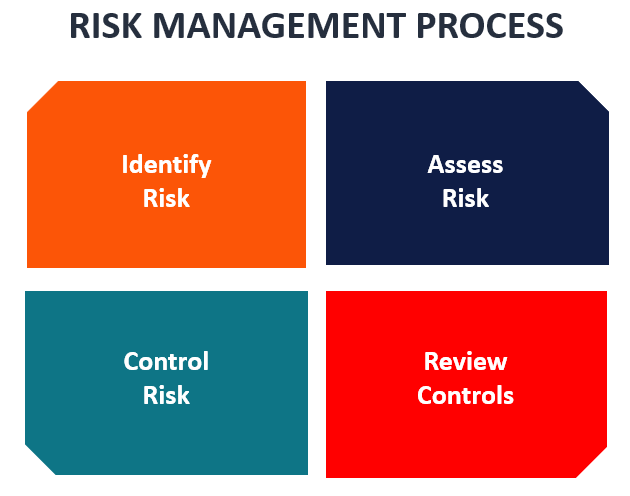The Crucial Importance of Risk Management in Protecting Corporate Assets
The Crucial Importance of Risk Management in Protecting Corporate Assets
Blog Article
Discovering the Value of Risk Management for Effective Decision-Making Approaches
In the detailed world of business, Risk Management becomes a vital consider the decision-making procedure. The ability to recognize potential risks and chances, and strategize accordingly, can spell the difference between success and failure. With tools such as SWOT and PESTEL, companies are outfitted to make informed options, cultivating durability and versatility in an ever-changing environment. Wondering just how this functions? Allow's unpack the dynamics even more.
Understanding the Principle of Risk Management
Risk Management, a critical part in decision-making, is typically misunderstood or oversimplified. Risk Management entails structured and disciplined methods, utilizing data and insightful analyses. From economic unpredictabilities, lawful responsibilities, calculated Management mistakes, to mishaps and natural calamities, it attends to numerous dangers - importance of risk management.
The Function of Risk Management in Decision-Making Processes
In the realm of calculated planning and business operations, Risk Management plays an indispensable function in decision-making procedures. Risk Management hence becomes a vital device in decision-making, assisting leaders to make educated choices based on a comprehensive understanding of the dangers entailed. Risk Management serves as a crucial component in the decision-making processes of any kind of organization.

How Risk Management Boosts Strategic Planning
In the context of strategic planning, Risk Management plays a critical role. Initiating with the identification of prospective threats, it further reaches the implementation of Risk mitigation steps. The function of Risk Management is vibrant but not fixed, as it demands constant tracking and adjusting of strategies.
Determining Potential Risks

Implementing Risk Mitigation
Having established the significance of determining prospective dangers, the following action is to explore Risk reduction. This procedure entails developing and carrying out strategies to handle determined dangers efficiently. It is a vital element of calculated planning as it boosts decision-making by decreasing possible adverse end results. Risk reduction techniques can range from Risk avoidance, Risk transfer, to take the chance of decrease. Each approach needs to be customized to the details Risk, considering its possible effect and the organization's Risk resistance. In addition, reliable Risk mitigation requires a deep understanding of the Risk landscape and the prospective impact of each Risk. This understanding enables companies to prioritize risks and allocate resources properly, guaranteeing that the most significant hazards are resolved initially.
Monitoring and Changing Techniques
Though Risk reduction is a crucial step in tactical planning, continuous monitoring and change of these approaches is similarly vital. This continuous process enables companies to identify new risks and reassess existing ones, guaranteeing the executed techniques continue to be efficient in the ever-changing business atmosphere. It likewise gives an opportunity to assess the success of the Risk Management measures, enabling modifications to be made where essential, further improving calculated preparation. Reliable monitoring and adjustment require making use of analytics and vital efficiency indications (KPIs) to measure effectiveness. These tools supply useful data-driven understandings that can educate click to find out more strategic decision-making. As a result, surveillance and adjusting Risk Management methods is an important component for improving an organization's strength and critical planning.
Case Researches: Effective Risk Management and Decision-Making
In the world of company and financing, successful Risk Management and decision-making often function as the columns of flourishing business. One such entity is an international oil business that alleviated monetary loss by hedging against varying oil prices. In another instance, a technology start-up flourished by identifying and approving risky, high-reward techniques in a volatile market. An international bank, confronted with governing unpredictabilities, efficiently browsed the situation through aggressive Risk assessment and vibrant decision-making. These instances highlight the value of astute Risk Management in decision-making processes. It is not the absence of Risk, yet index the Management of it, that typically differentiates effective business from not successful ones. These situations highlight the important function of Risk Management in tactical decision-making. importance of risk management.
Tools and Strategies for Effective Risk Management
These tools, such as Risk signs up and warmth maps, aid in recognizing and assessing prospective risks. Risk feedback methods, a key element of Risk Management, include approving, staying clear of, transferring, or mitigating threats. With these methods and devices, decision-makers can browse the complex landscape of Risk Management, consequently facilitating notified and efficient decision-making.
Future Fads in Risk Management and Decision-Making Techniques
As we discover the vast landscape of Risk Management, it becomes obvious that the methods and devices used today will continue to advance. The concept of Risk society, where every participant of an organization is conscious and involved in Risk Management, will acquire extra prestige. These patterns proclaim an even more proactive and inclusive method in the direction of Risk Management and decision-making.
Conclusion

Risk Management hence ends up being an important tool in decision-making, helping leaders to make enlightened selections based on a thorough understanding of the risks entailed. Risk mitigation techniques can vary from Risk evasion, Risk transfer, to take the chance of decrease (importance of risk management). Efficient Risk mitigation calls for a deep understanding of the Risk landscape and the potential impact of each Risk. Risk feedback methods, a crucial element of Risk Management, include accepting, staying clear of, moving, or mitigating dangers. The idea of Risk culture, where every participant of an organization is conscious and involved in Risk Management, will acquire much more importance
Report this page